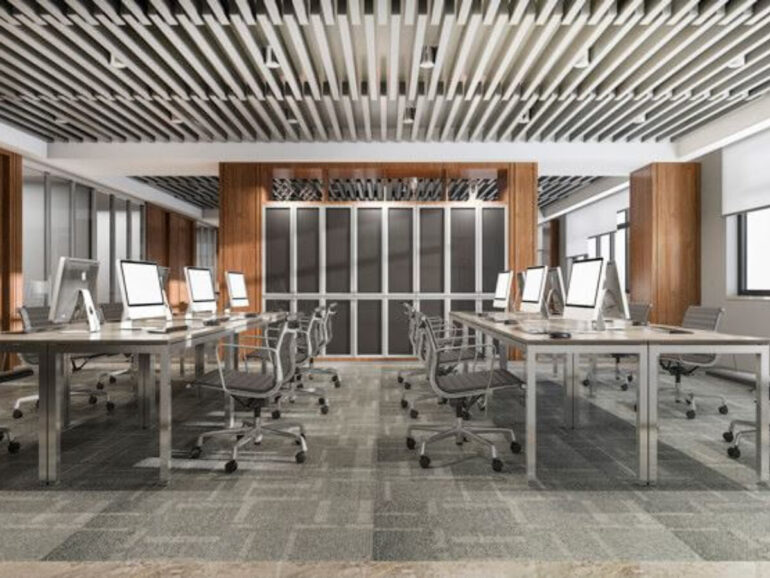In the world of commercial renovations, time is money—and that saying becomes very real when crews are waiting on materials, schedules are disrupted, and projects fall behind. While most project managers invest hours coordinating tradespeople, permits, and design approvals, one crucial detail often gets overlooked: the timing of material delivery.
It’s not just about getting what you need. It’s about getting it at the exact right time.
Whether you’re managing a retail fit-out, renovating office spaces, or upgrading industrial facilities, delays in delivery have ripple effects that impact every phase of the job. From wasted labor hours to storage issues, poor material coordination can undermine even the most carefully planned project.
Let’s look at how proper delivery timing influences commercial renovations and how proactive planning around this single detail can lead to smoother, faster, and more profitable outcomes.
The Domino Effect of Mistimed Deliveries
Every renovation project operates within a sequence. Floors must be laid before fixtures are installed. Wiring must be completed before drywall is sealed. These stages are interdependent—and that’s why material delivery timing is critical.
When deliveries arrive too early:
- Materials can clutter the job site
- Sensitive items risk damage from exposure or misuse
- Storage costs increase, especially for large or delicate items
When deliveries arrive too late:
- Workers stand idle while waiting for products
- Timelines shift, creating scheduling conflicts for other trades
- Client expectations may not be met, affecting future contracts
The key isn’t just having materials. It’s having them on hand at the right moment, aligned with workflow needs.
Commercial Sites Are Different From Residential Projects
Unlike home renovations, commercial job sites are often on tighter deadlines and operate in more public or high-traffic environments. Retail stores, for example, may need to shut down during renovations, making every day of delay a revenue loss. Office projects might have specific move-in dates that can’t be moved.
The pressure is higher, and so is the complexity. Multiple vendors, subcontractors, and inspection checkpoints all rely on things being in the right place at the right time.
This is where strategic material delivery planning makes a noticeable impact. It keeps teams focused, minimizes downtime, and reduces job site friction.
Staging and Delivery Zones: An Overlooked Detail
Every commercial job site has spatial limitations. There may be limited access to the loading area, restricted elevator use, or shared workspaces that must remain partially open to the public.
This makes material staging a logistical challenge. If deliveries are not timed with precision:
- Parking lots or walkways can be blocked, creating safety hazards
- Items may be stored in temporary locations, increasing the chance of loss
- Contractors may be forced to move materials multiple times
Optimizing staging starts with knowing what will arrive, when, and in what quantity. Coordinating material delivery with real-time project stages avoids piling up products that aren’t needed yet.
Coordination with Subcontractors and Workflow
Tradespeople work best when their tools and materials are ready to go. Drywall crews can’t do their job if insulation hasn’t arrived. Flooring installers need adhesives and underlay delivered on the same day as the flooring itself—not a week later.
Timing delivery to match subcontractor schedules prevents:
- Miscommunication between trades
- Extra labor costs due to delays
- Backtracking and rework caused by missing components
This approach also keeps the job site cleaner and safer, allowing workers to focus on execution rather than locating or moving misplaced materials.
Supplier Communication Is Just as Important
Having reliable vendors and suppliers is one thing. Maintaining open and proactive communication with them is another. When planning your material schedule:
- Confirm lead times and availability well in advance
- Account for shipping delays or weather-related disruptions
- Discuss order flexibility in case of scope changes
A minor oversight—like forgetting that certain materials require 10-day processing—can cascade into project rescheduling. Establishing strong supplier relationships with partners like Monarch Dumpster Rental helps ensure that deliveries are made with precision, even under tight timelines.
The Cost Factor: Avoiding Overtime and Redos
When labor is on-site but can’t proceed due to missing materials, those hours are still billed. If the schedule slips enough, overtime may be required to catch up, adding unnecessary expense. Worse yet, workers may rush through tasks once materials arrive late, increasing the risk of mistakes.
Conversely, materials that sit too long on a job site can become damaged, lost, or exposed to theft. Replacement costs are rarely budgeted in advance, cutting into profit margins.
Timely material delivery protects the bottom line by:
- Keeping the schedule on track
- Preventing avoidable labor costs
- Reducing waste through better material handling
It’s a small detail with a large financial impact.
Real-Time Adjustments and Contingency Planning
No project ever goes perfectly. Weather delays, client changes, and supply chain issues are common in commercial renovations. What matters is how flexible the plan is.
Smart delivery strategies build in contingency windows. This might include:
- Splitting orders into multiple drops
- Having alternative vendors on standby
- Reserving temporary storage space just in case
Being prepared doesn’t slow down progress—it accelerates it by reducing reliance on perfect conditions.
Digital Tools and Scheduling Systems
Technology now allows teams to coordinate delivery logistics in real-time. Platforms that link project schedules with supplier systems help prevent communication breakdowns. Team members can receive alerts when trucks are en route or when warehouse pickups are complete.
These tools streamline planning and give foremen and site managers more visibility into what’s arriving and when. If delays are expected, resources can be reallocated rather than wasted.
Delivery tracking and digital coordination aren’t just trends—they’re becoming necessary tools for successful project management in commercial settings.
The Long-Term Benefits of Getting It Right
Efficient delivery practices impact more than one project. Contractors who consistently manage timelines and keep job sites running smoothly are more likely to build long-term relationships with property managers and developers.
It shows reliability, attention to detail, and professionalism—all qualities that lead to repeat business.
Aligning with service partners who understand the stakes, such as Monarch Dumpster Rental, helps create dependable supply chains that can support future projects with confidence.
Final Thoughts: Timing Is a Competitive Advantage
In commercial renovations, every detail matters—but few have the domino effect of material delivery. Getting it right ensures smooth transitions between project phases, minimizes waste, and protects profits.
It’s not just about having the right materials. It’s about having them delivered at the right moment.
Taking the time to plan, coordinate, and communicate around material logistics is no longer optional—it’s the backbone of successful project execution. Those who master it gain a clear edge in the competitive world of commercial construction and remodeling.






